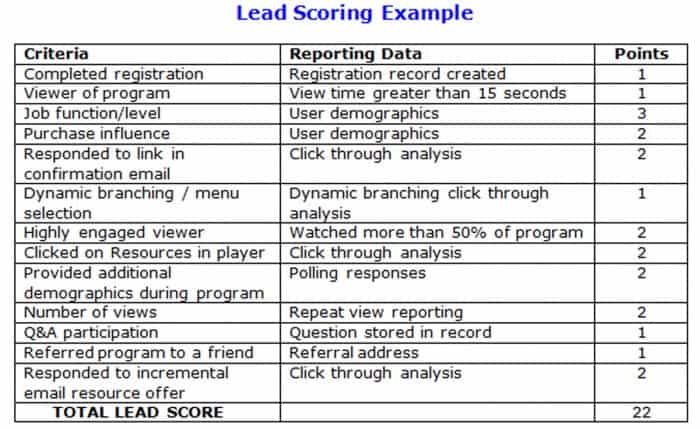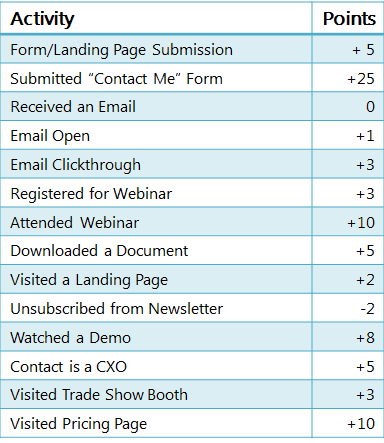Member recruitment is a never-ending job in association management. Is your strategy for pursuing leads as effective as it could be? It can take awhile to convert a prospect into a full-fledged member. Look at how you’re identifying and pursuing potential new members, and consider the following tips for targeting the most promising prospects.
1. Get started right away
You don’t need to wait until someone has asked about membership to start nurturing their business. A relationship with a prospect starts the first time they interact with your association in any way. These initial touch points may be active, like attending a networking event or meeting or more passive, like opening an email or reading content. Any point of contact is an opportunity to kickstart a relationship.
Make sure that you are capturing email addresses from prospects during as many of these initial contacts as possible. You’ll already be collecting these for people who sign up for events or make purchases. You can also ask visitors to your website to give their email addresses before clicking on a free article or blog post.
Getting contact information is an essential first step. From there you can start supplying potential members with useful content and create more opportunities to interface with them on an ongoing basis.
2. Be the go-to source for useful content
Once you have a way to keep in touch, start reaching out to members with practical, high-quality content. When you send prospects relevant information, they get a peek at one of the major value factors of being a part of your association. Share industry insights and articles about how current events impact their work and how your association’s advocacy efforts support them. Offer tips on career and professional development to show how association membership can help them advance their career. Your goal should be to provide content that is compelling, targeted and timely. Avoid sales talk, but do provide links to web pages where interested prospects can explore your association’s offerings.
3. Appeal to prospects on different paths
Not all members are going to have the same needs. A prospective member who has just entered the profession may be more interested in making connections and developing foundational knowledge about the industry. Mid- and senior-level folks are likely to look for more strategic insights and advanced leadership training. Students and people who are transitioning careers will want to know what it’s like to work in the industry. Be mindful of the full range of industry roles and occupations your association represents.
Also look for overlap between groups. Not everyone fits neatly into categories, but you should be doing some degree of targeted marketing to reach different types of prospective members. The easiest way to get started is to sort prospects by the type of work they do and where they are in their career.
4. Use a lead scoring system
You have a limited amount of staff time and resources to conduct the central work of recruiting, retaining, and serving members. It may be tempting to cast as wide a net as possible when going after members, but you’re better served targeting the prospects who are most likely to convert.
Rely on all of your data-gathering tools to understand potential members and track their demographics and preferences. Use an association management system (AMS) like Personify360, Wild Apricot or MemberClicks to establish a system for scoring leads. Make sure your staff is trained on the ins and outs of your AMS so teams aren’t doing work that should be automated. Data is only as good as its application.
Think about the member actions that will help you understand where the prospect is in their membership journey. Some examples of behaviors to track include:
- Registration for events or webinars
- Downloading content from your website
- Subscribing to a newsletter
- Website visits and pageviews
Demographics to track include:
- Job title/career stage
- Geographic location
- The budget size of their organization
Neither of these are exhaustive lists. The key is to select criteria that are most relevant to your association’s efforts. Assign point values for activities according to the level of engagement each behavior implies. For example, attending a meeting gets much higher points for engagement than a visit to your website.
Assign values in the same way for demographics based on what you already know about your membership., If, for example, you know mid-career professionals have been most interested in your networking events in the past, give career stage criteria more weight in the scoring process.
Here are examples of what a lead scoring matrix might look like.


5. Make sure your staff efforts are in sync
While everyone in an association has their specific role, membership is everyone’s job. That said, it’s easy to get caught up in one’s day-to-day duties and lose sight of the bigger picture. Take time to bring staff together and make sure that everyone is working toward a set of shared goals and strategies to go after new members. Funnelling prospects on the path to membership is much more effective when all departments are in sync, from meeting and learning to publications and advocacy.
6. Keep track of data
Well-maintained data helps you do a better job at running all aspects of your association. That includes lead nurturing. Most associations have an association management system (AMS). Many have customer relationship management software (CRM) as well. Make sure you’re feeding data about prospects into both systems. The data you collect on members can improve your process of lead generation and recruitment.
The software you choose to manage data is less important than ensuring you are collecting data in a centralized location and using it to make decisions about who you reach out to and what methods you use. Capturing reliable data on a consistent basis is key to identifying and following up with leads.
7. Continue to follow up with potential members
Not all prospects are going to sign up for membership the first—or even second or third time—that you make contact. Keep up outreach to prospects who have interacted with your association, but haven’t joined. Continue to supply relevant and up-to-date content over email, and experiment with different ways to boost their engagement. That can include things like inviting them to networking events or offering a discount code for an upcoming webinar.
If you’re seeing a lag in your member recruitment, it may be time to reexamine your strategy for developing prospective members. Focus on the people who are most likely to join in order to maximize your recruitment efforts.












